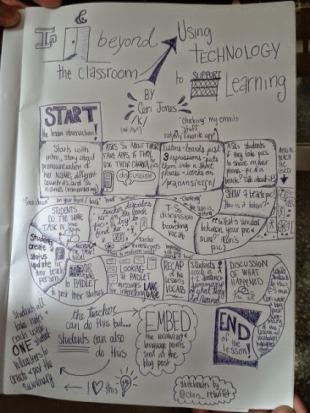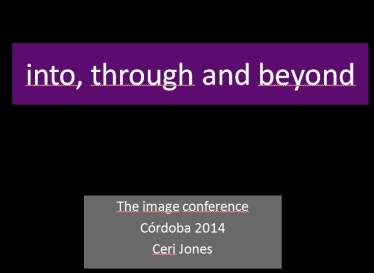
I’m teaching a group of C1 students at the moment. They’re university lecturers and the main aim of the course is to boost their confidence in their ability to teach through the medium of English. Our brief for this term is to work on pronunciation. At an initial planning stage we drew up a syllabus of various areas of phonology, from individual problem sounds to features of connected speech, from word stress to chunking and timing.
In the first half of the lesson we worked hard on chunking and timing by listening to, and then shadow reading, a short clip by Woody Allen from his early studio years. In the second half I wanted to move on to intonation and attitude. We had earmarked questions as our way in. I had found a YouTube clip that I thought I could use as a springboard, but I wasn’t that convinced by it, or how best to exploit it. I started with the question in the opening frame: What questions did you ask today? My plan was to ask the students to brainstorm lists of questions in groups or pairs which we could then board and work on together. Then we would compare them with the questions in the clip.
Our class is in the morning, so we changed the tense to What questions have you asked today?. And I shared an example, thinking back to the first question I had asked that morning: Are you going to have a shower? along with the context: to my teenage son at 7am as I walked to his room to ask him to turn his alarm off – for the nth time! The students seemed happy to be freed of the close, controlled focus of the shadow reading in the first part of the lesson and got into the flow of the task very quickly. There was a lot of discussion of who and where and why and when.
We boarded one or two questions from each group, making slight adjustments to wording as necessary, and I divided the questions into two groups as we went: open (wh-questions) and closed (yes/no) questions. The students identified the two groupings and we briefly looked at the fall/rise intonation patterns respectively, focusing on the tonic syllable and drilling the questions in a neutral/friendly tone. I then asked them if they thought my question had been asked like that, or whether they think maybe the tone might have been a little different. They decided that I was probably being a tad passive-aggressive and gave examples of how they thought I probably asked my question. They also offered possible alternatives: Are you going to have a shower or what? Aren’t you going to have a shower? Each time the intonation and stress patterns were as important as the form. And our focus was on the attitude as it was expressed through their pronunciation, not on the language (though, of course, there was a secondary focus on form).
They then broke into groups and discussed the other questions we’d boarded, trying them all out with various attitudes and contexts. The concept of stress-shifting came up and how this related to meaning and attitude. In the feedback stage, there was a lot of spontaneous sounding out going on, sometimes developing into choral self-drilling. And a lot of lively discussion of how and where and when intonation was important.
Needless to say, I ditched the rest of the video. We hadn’t needed it for input or consolidation or scaffolding. The phonology had emerged, beautifully, from a very simple task.














